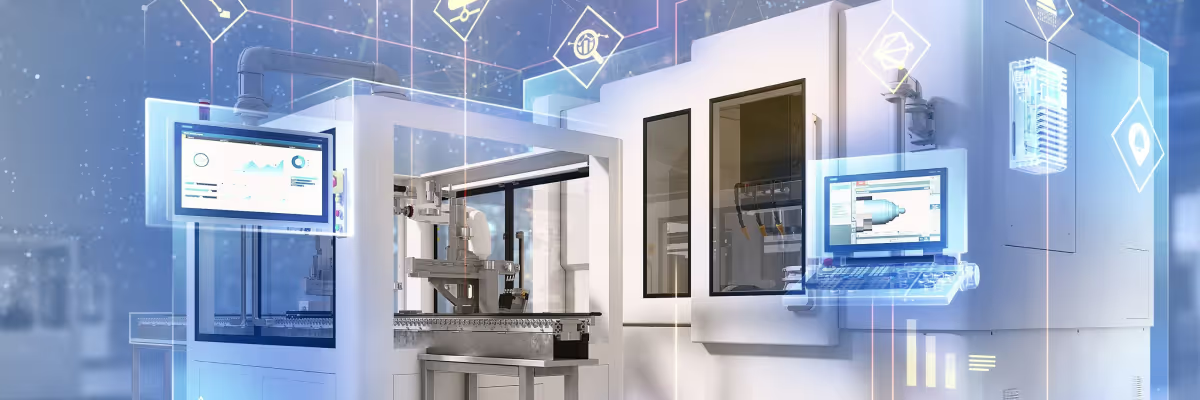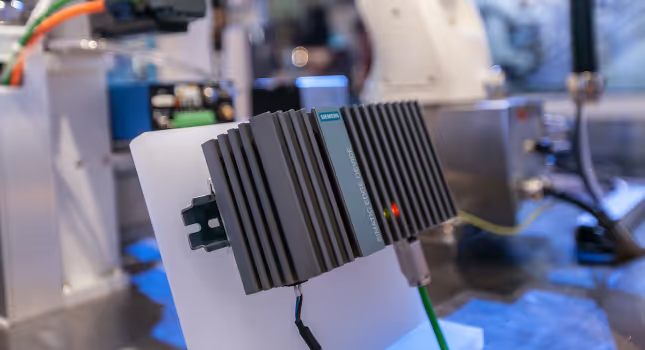Mendix on Edge
In many car factories, more is happening than just car production. In an environment where safety, efficiency and predictive capabilities are crucial, something else stands out: data collection.

The amount of data gathered today is immense. In a typical General Motors factory, 6,000 devices generate a constant stream of data, ranging from machines on the production line that log every movement to sensors that capture the tightening of every bolt and nut.
Moreover, the drive to collect data isn’t limited to the automotive industry. Back in 2018, it was already evident that offshore drilling platforms could generate more than 1 terabyte of data per day. This data, hindered by relatively slow satellite connections, struggles to leave the offshore platform, resulting in the shocking fact that only 1% of this data is used for analysis and decision-making. For a manufacturer, this raises a critical question: how can I utilize all my available data to make the right decisions, respond quickly and act proactively? In this first blog in a series of several, we will search for an answer.

The Edge
An essential part of the answer to this question lies in relocating computing power. Instead of processing large volumes of data on a centralized server, some of the processing is now moved to the data source itself. Closer to the machines and sensors that generate the data. Closer to the people who can act on this data. Closer to the Edge.
This is a promising shift, where benefits like reduced latency and advanced, rapid analysis capabilities emerge quickly. Data no longer needs to be moved to a centralized server. Instead, it is processed at the source. Nevertheless, this shift does not come without challenges.
In the context of a General Motors factory, there traditionally exists a separation between IT systems (Information Technology), focused on managing and processing of data, and OT systems (Operational Technology), aimed at controlling physical processes, such as machines on a production line. This is problematic, as the immense amount of data generated by machines and sensors provides the most valuable insights when combined with IT systems.
Siemens Industrial Edge
This gap between IT and OT systems is precisely what Mendix’s parent company, Siemens, aims to bridge with the Siemens Industrial Edge platform. This platform brings data processing and analytics capabilities from a central location to the factory floor, providing solutions to manage and improve this new infrastructure across three levels:
- The Factory Floor: Where OT systems are enriched with IE (Industrial Edge) devices – compact computers designed to run specific applications, process, and even visualize data at the source.
- The Factory: Where management software supports the oversight of IE devices, offering a standardized, centralized way to scale, roll out applications and perform updates.
- The Cloud: Where, across factories, management software, user access and license allocations are administered.
With Siemens Industrial Edge, manufacturers can deploy ready-to-use applications to their OT systems, such as applications that make sensor data available through standardized communication protocols like OPC UA or MQTT, or applications that simplify data storage. However, a key question remains: how can I as a manufacturer make use of all these possibilities to turn my specific challenges into opportunities?

Mendix on Edge
This is where Mendix on Edge comes into play. Integrating the low-code platform with the Siemens Industrial Edge platform unlocks new benefits and opportunities, enabling faster decision-making than traditional systems allow. In the context of the automotive factory, this could entail optimizing quality control or predicting maintenance by processing data at the source. In these efforts, the combination of Siemens Industrial Edge and Mendix offers benefits, such as:
- The Power of the Mendix Platform: Rapidly and iteratively add value with out-of-the-box integration options like the Mendix Machine Learning Kit or the OpenAI connector.
- Low Latency: By running applications close to the data source, Mendix on Edge minimizes the delay between data generation and processing.
- High Availability: IE devices can continue to operate and process data even when disconnected from the central server or cloud; a crucial advantage in environments with unreliable network connections.
The possibilities with Mendix on Edge are extensive and deserve more explanation, examples and applications. Additionally, there are more questions to address: how complex is it to integrate Mendix on Edge? How does the Siemens Industrial Edge platform prevent vendor lock-in? Keep an eye on the Squad Apps website and social media channels for answers, new blogs and demos.
We're here to help
Are you interested in Mendix on Edge and want to explore what Squad Apps can do for you? Get in touch! As an experienced Mendix partner in the manufacturing industry, our Expert certified Mendix developers, trainers and Mendix MVP are ready to assist you.












